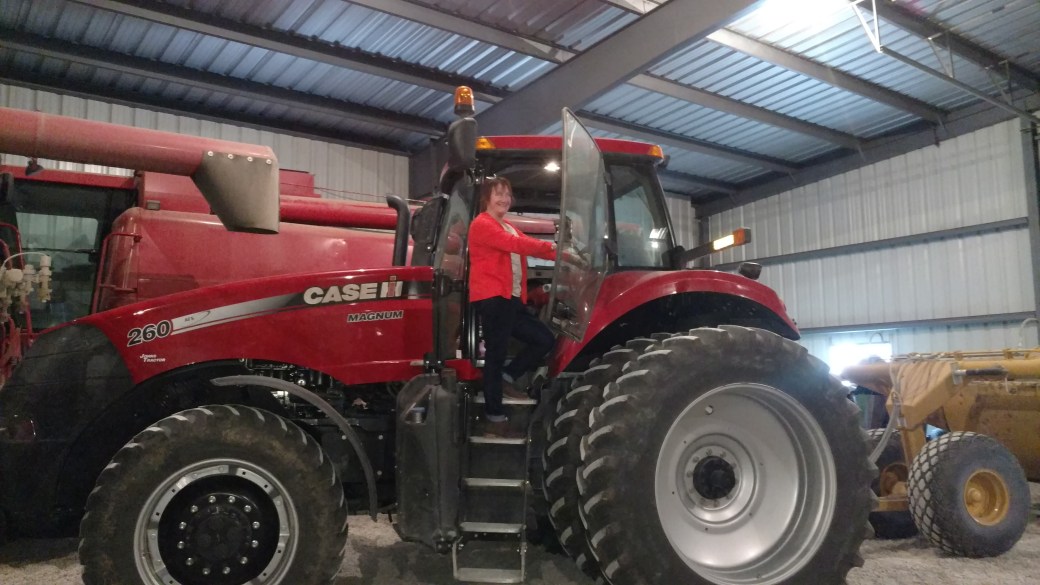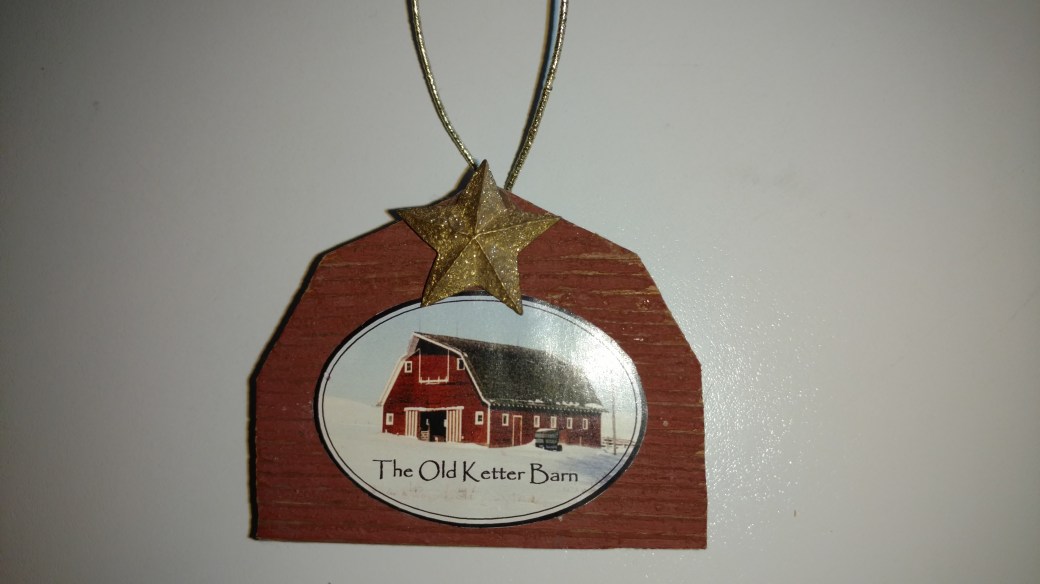![15590168_1550014341680151_293483791419753097_n[1]](https://thesisterlode.com/wp-content/uploads/2018/11/15590168_1550014341680151_293483791419753097_n11.jpg?w=1040)


HOME SWHEAT HOME
Yesterday for lunch, I enjoyed a turkey sandwich. For dinner—or supper, as we call it on the farm, I had a juicy burger in a soft bun. I savored a sliver of single crust raisin cream pie for dessert.
Last week, our family had take-home pizza, and we enjoyed every bite. I made a cake for dessert, and today, we plan to partake of a loaf of whole-wheat take-and-bake bread.
All these goodies are made possible courtesy of wheat, the staple crop of Kansas.
***********
Yesterday, after I enjoyed that turkey sandwich, I took off for my annual trip to the harvest field. My brothers had an afternoon of cutting left; harvest took place this year in between the rains. I was worried they would finish before the weekend, but there were a few hours of harvest left for me to enjoy. I haven’t missed a harvest since 1990. It is the high point of the year on the farm, the time of year that brings back my fondest farm-girl memories.
Along with our four brothers, Gail, Suzanne and I grew up on this farm in north-central Kansas. It is now a fourth-generation Kansas family farm, and this heritage gives me untold pride. Two of our four brothers continue to demonstrate stellar stewardship of our family legacy, and I cannot express in words how grateful I am to them for that. Our nephews show promise to maintain this legacy in the future, and this sense of family attachment to our parcel of the Kansas earth is something that will continue to give me a secure sense of home.

The house we grew up in–the house that built us, was over 100 years old when we lived there. It housed us all for many years, but it was time for it to come down. It’s spirit lives on, and one of our brothers lives on with his family in a new house built just up the driveway from where it stood. A garden now occupies that spot, a fitting tribute to the plot of land that grew our family.


At the crest of the hill that slopes down on one’s final mile to our farm, the panoramic view is one that never fails to warm me. It was already 90-plus degrees, but I welcome this kind of warmth, no matter what the temperature is.

Much of our family’s land lies “over west” from our farm, the term we have always used to refer to the farm ground several miles west of our farm. Today, however, the remaining wheat was within view of the farm; I don’t remember a trip where I was able to enjoy the proximity of the farm for my afternoon in the harvest field. The two combines worked across the road from each other, and the two semi-trucks were kept busy being filled and refilled.

I hopped into my brother’s combine when I arrived; his son ran the other combine across the road. This time in the cab is the best view of the action, as the reels comb the wheat into the header to begin the process of separating the wheat from the chaff.


The tractor-driven grain cart allows the combine to continue cutting without stopping to drive to the semi. The tractor pulls up alongside the combine, moving forward along with the combine as it simultaneously dumps a load and continues to fill the bin.
A local farmer once told our dad the story of his city-slicker relative who came to the farm for harvest, and, upon observing this sight, commented:
“It’s amazing how that reel pulls the combine through the wheat.”


Amazing indeed if that were how it worked, but it’s more complicated than that. Life is usually never as easy at it looks to the unaware eye, and this situation is no different. In the end, though, the wheat is separated from the chaff, carried to the bin and awaits its turn to be dumped into the truck.
Some of the wheat is stored on the farm in a bin as seed wheat for next year’s crop,

Business decisions between the farmers are made at all phases of the harvest.
and the rest is transported to the elevator down the road.
The other half of my harvest agenda is a trip in the big rig to the elevator.
The truck is first weighed and the driver identifies the account,

Then the wheat is dumped from the truck into the pit.
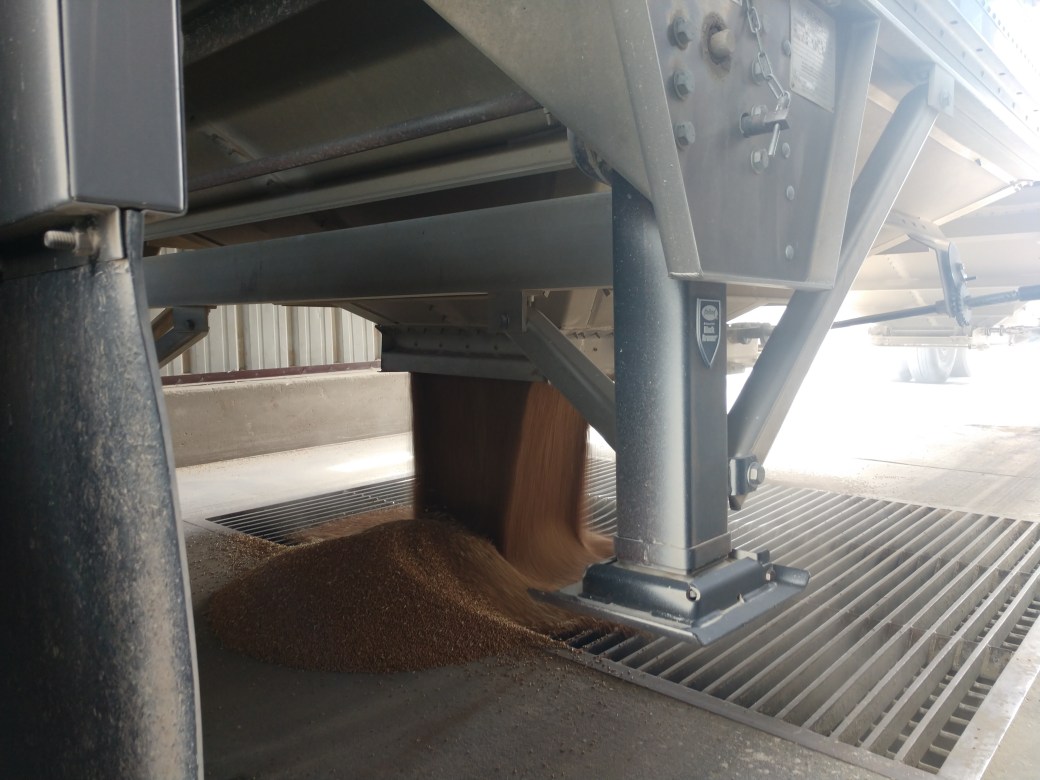
The hopper is wide open to dump the wheat down into the pit

Where it awaits its vertical trip up into the elevator and is eventually hauled away by train.

The elevator hand closes the hopper, and we’re off for another weigh-in to determine the amount of grain deposited.
And then we head back to the field to do it all over again multiple times. Except this year, there was only one more load remaining. My brother informed the elevator hand he would be back only one more time; their harvest work is almost done this year for my brother, and for most area farmers.
This year, unlike any other year I can remember, I got to savor the sweet smell of fresh-cut alfalfa, as the farmer they hire to swath this beautiful and fragrant livestock feed did his rounds in the field next to the wheat field we were in.

My brothers don’t own a swather; it is one of the few jobs they hire out.
Our younger brother took a panoramic video of our farm from atop the grain bin:
***********
Knowing that my family—and that grilled burger will be waiting for me for supper, I head out after the elevator trip. Not, however, before I make a cruise through our small hometown.
The long hill to town marks the ascent out of the beautiful valley our farm inhabits.

At the top of the hill, four miles away, our hometown pops into view.

The warm memories of my youth flood back as I see the school we all graduated from,

The church we all grew up in,
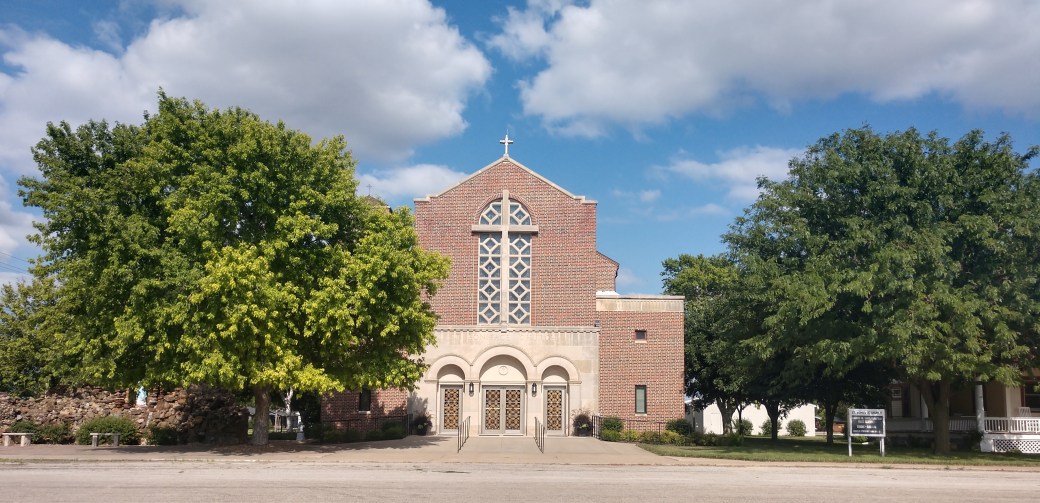
And our parents’ final resting place.

Our childhood home may no longer stand, but this community—the community that built us—still stands. Despite the demise of much of Small Town America, Tipton, Kansas has continued to survive and thrive as the even-smaller-than-it-was-when-we-grew-up-there dot on the map, but as a community, its members know the importance of keeping it alive.
I will forever be grateful for our beginnings in this town, and to its current members for sustaining its legacy with hard work and pride.
***********
Even though I grew up on a farm, I am helpless to drive a combine or truck. For the most part, our four brothers helped Dad, and the girls helped Mom. I can, however, still make a mean cherry pie and fry up a big chicken dinner on command.
Gail, however, was the Swiss Army Knife who could do it all because she had to. She could probably even figure out how to haul wheat in that big rig if she had to; she learned how to drive a smaller grain truck that is mostly phased out of most modern farm operations. She doesn’t have a CDL that would allow her to legally drive it, but in a pinch, Gail’s resourcefulness would surface. I wouldn’t get near that driver’s seat, but Suzanne reports she did drive a short distance on a dirt road with a lot of assistance from our brother in the passenger seat.
The high-tech combines of today may confound Gail, but I know she handled the older ones with ease. Both Suzanne and I attempted a quick spin in the combine several summers ago, but again with assistance right next to us in the cab. Another one of our brothers dutifully and gladly takes a harvest leave every summer from his gig as an airline captain to pilot that behemoth machine, which is much appreciated by our farmer brothers. While he has an autopilot in the cockpit, the combine requires hands-on attention at all times.
***********
Some of the big cottonwoods still stand on the farm,

And the woods behind the house where we explored, hiked, built forts and sometimes hid out still stand.
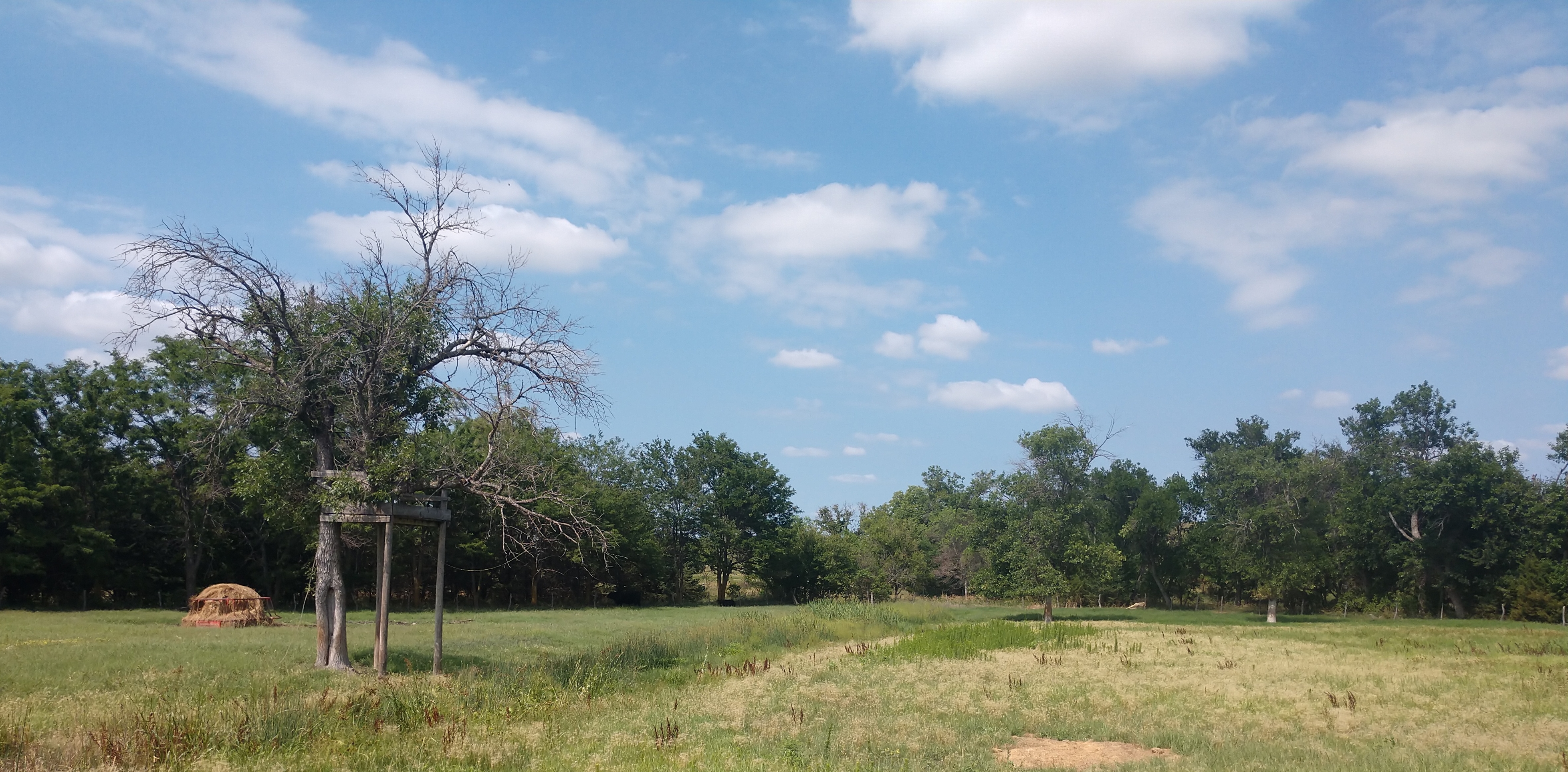
Our farm-girl heritage still stands within each of us. We still know the value of hard work, we aren’t afraid to answer the call in nature if we have to—our house had one bathroom for nine people, and we know where our bread comes from–and the work involved in bringing it to us.
I have to wrap up and enjoy my Sunday dinner. My Mark-of-all-trades husband cooked up a steak lunch for us—dinner, as it is called on the farm—complete with a loaf of take-and-bake bread.
I know where it came from.
Swheat.



![24129630_1925515547463360_6799156173651245620_n[1]](https://thesisterlode.com/wp-content/uploads/2017/11/24129630_1925515547463360_6799156173651245620_n1.jpg?w=1040)



![25398993_1950435271638054_856744925146866973_n[1]](https://thesisterlode.com/wp-content/uploads/2017/12/25398993_1950435271638054_856744925146866973_n1-e1513479617476.jpg?w=1040)
![27867198_2014574081890839_1820938094393023267_n[1]](https://thesisterlode.com/wp-content/uploads/2018/02/27867198_2014574081890839_1820938094393023267_n1.jpg?w=1040)
![35123438_2159040530777526_65481694165073920_n[3]](https://thesisterlode.com/wp-content/uploads/2018/07/35123438_2159040530777526_65481694165073920_n3.jpg?w=1040)
![19756604_1759937557354494_5526553150979117856_n[1]](https://thesisterlode.com/wp-content/uploads/2017/07/19756604_1759937557354494_5526553150979117856_n1.jpg?w=1040)







![19598656_1759936714021245_435964469278323879_n[1]](https://thesisterlode.com/wp-content/uploads/2017/07/19598656_1759936714021245_435964469278323879_n11.jpg?w=1040)
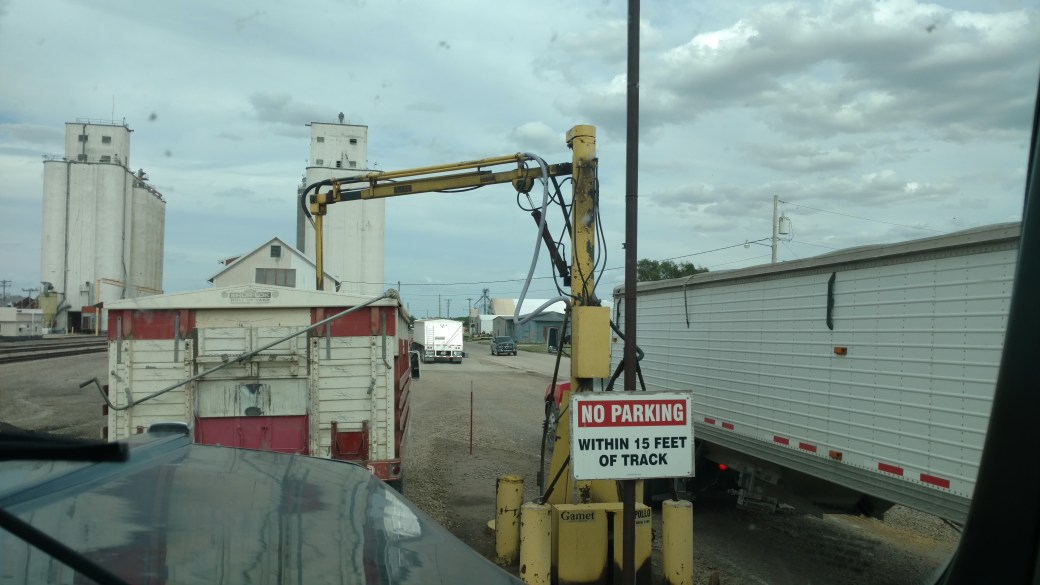

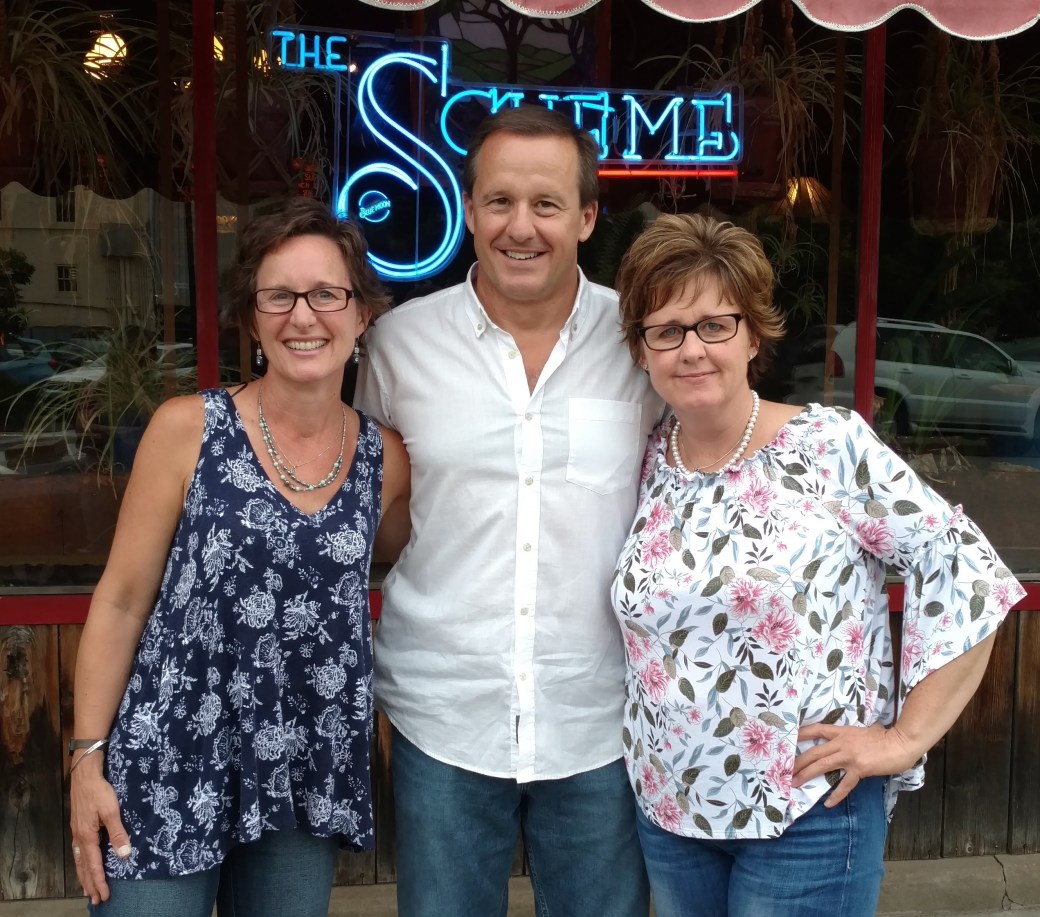
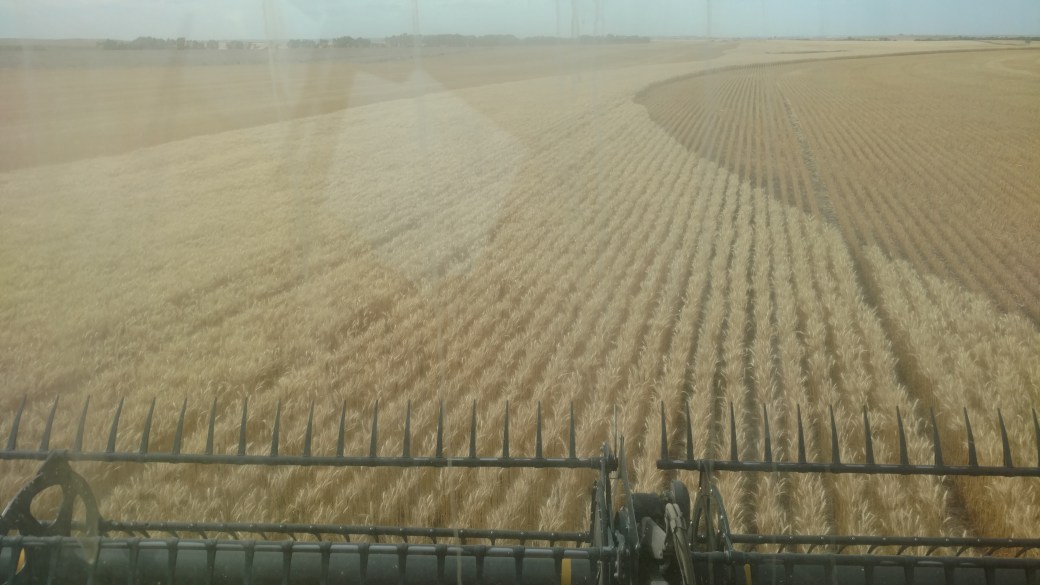
![32349729_10216248681037558_4967904885061189632_n[1]](https://thesisterlode.com/wp-content/uploads/2018/06/32349729_10216248681037558_4967904885061189632_n1.jpg?w=1040)







